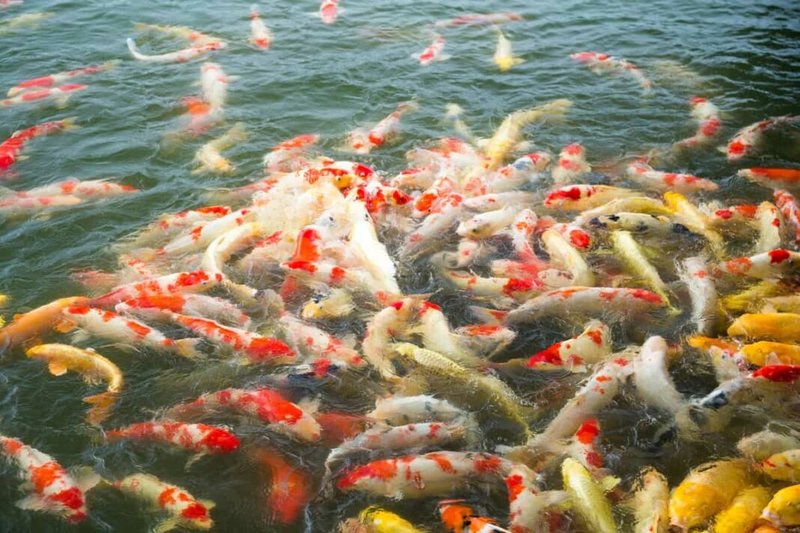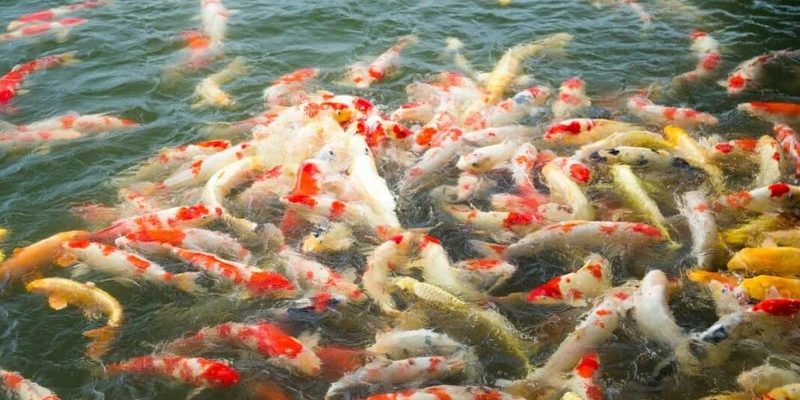
Koi are more than just beautiful fish; they have become a popular choice for aquaculturists and hobbyists alike. It’s crucial to understand the financial side of this venture before you take the plunge. So, grab a cup of coffee, and let’s fish out the details about whether koi farming is a worthwhile investment!
Understanding Koi Farming Basics
Before we get into the nitty-gritty of costs and profits, let’s clarify what koi farming entails. Koi, originally bred in Japan, are colorful varieties of the common carp. They are raised not just for their beauty but also for competition and breeding. Essentially, koi farming means cultivating these fish in a controlled environment—think ponds or aquaculture systems—where they can thrive and grow.
When you think of starting a koi farm, several factors come into play. You’ll need a clean source of water, space for the ponds, and a proper filtration system to keep the habitat healthy. Also, think about the types of koi you want to raise. Certain varieties, like Kohaku or Sanke, can fetch high prices, especially if they have the right markings and colors.
The Costs of Starting a Koi Farm
Let’s break it down: what does it actually cost to start a koi farm? Honestly, the initial investment can be substantial, depending on how large you want to scale your farm. Here are some primary expenses to consider:
- Pond Construction: Building a pond can range from $1,000 to $10,000. It all depends on the size, materials, and design.
- Filtration Systems: A good filtration system is crucial for keeping your koi healthy. Expect to spend anywhere from $500 to $3,000.
- Koi Stock: Purchasing koi can vary widely. You might pay $50 for a basic fish or up to $5,000 for a show-quality specimen. Starting with a mix is often wise.
- Feeding and Care: High-quality koi food and healthcare (medications, pond testing supplies) can add another few hundred dollars per year.
So, as you can see, the startup costs can add up quickly. If you’re starting small, look at an investment of around $3,000 to $10,000 just to get things rolling.
Potential Earnings from Koi Sales
Now, let’s shift gears and talk about potential earnings. You might be wondering if there’s enough demand for koi to make this worthwhile. Here’s the thing: the koi market can be lucrative if you know your audience.
The price you can charge for koi largely depends on their quality and lineage. Here’s a generalized breakdown of potential revenue based on koi size and grade:
- Pond Grade Koi: Typically sells for $10 to $50 each.
- Show Quality Koi: Ranges from $100 to $1,000 each.
- Champion Koi: These can command prices from $1,000 to over $10,000, depending on their lineage and health.
If you’re dedicated to breeding high-quality koi, you can significantly increase your income potential. You could even consider offering koi for sale to local aquarists or at koi shows, where enthusiasts flock to buy rare varieties.
Calculating ROI: How to Measure Profitability
So, now that we’ve discussed costs and potential revenue, how do you measure your ROI? ROI simply tells you how much profit you make compared to your initial investment. It’s a way to see if your koi farming venture is worth the effort.
The formula for ROI is:
ROI = (Net Profit / Total Investment) x 100
For example, if you invest $10,000 into your koi farm and earn $5,000 in profit after expenses, your ROI would be:
ROI = ($5,000 / $10,000) x 100 = 50%
If you’re consistently earning more than you spend, you’re on the right path. Just remember that it might take a couple of years to see significant returns, especially if you’re starting from scratch.
Common Challenges in Koi Farming
While koi farming seems appealing, there are challenges you need to be aware of. Here are some common issues you might encounter:
- Water Quality: Maintaining optimal water conditions is essential for koi health. Poor water quality can lead to disease outbreaks.
- Predators: Birds and raccoons love koi. Having a plan to protect your fish from predators is important.
- Breeding Difficulties: If you plan to breed koi, you’ll need to understand their breeding cycles and care for the fry.
Each of these challenges requires time and effort. But with dedication and proper planning, they can often be managed.
Is Koi Farming Right for You?
Ultimately, whether koi farming is profitable for you depends on your passion, commitment, and approach. Are you willing to invest time into learning about koi care? Do you enjoy being outdoors and working with your hands? If you answered yes, then this might be the right venture for you.
Consider starting small, perhaps with a few ponds and a couple of koi, to see how you enjoy the process. As you gain experience and see results, you can scale up your operations.
Koi farming can be a rewarding journey if you’re ready to invest both time and money. The initial costs can be significant, but the potential for profits, especially with high-quality koi, is undeniably appealing.
As with any venture, it’s vital to do your homework and understand what you’re getting into. If you love koi and enjoy the challenge, you might just find that koi farming is not only profitable but also a fulfilling way to connect with nature. So, why not dip your toes into the water? Who knows, you might find yourself swimming in success!

